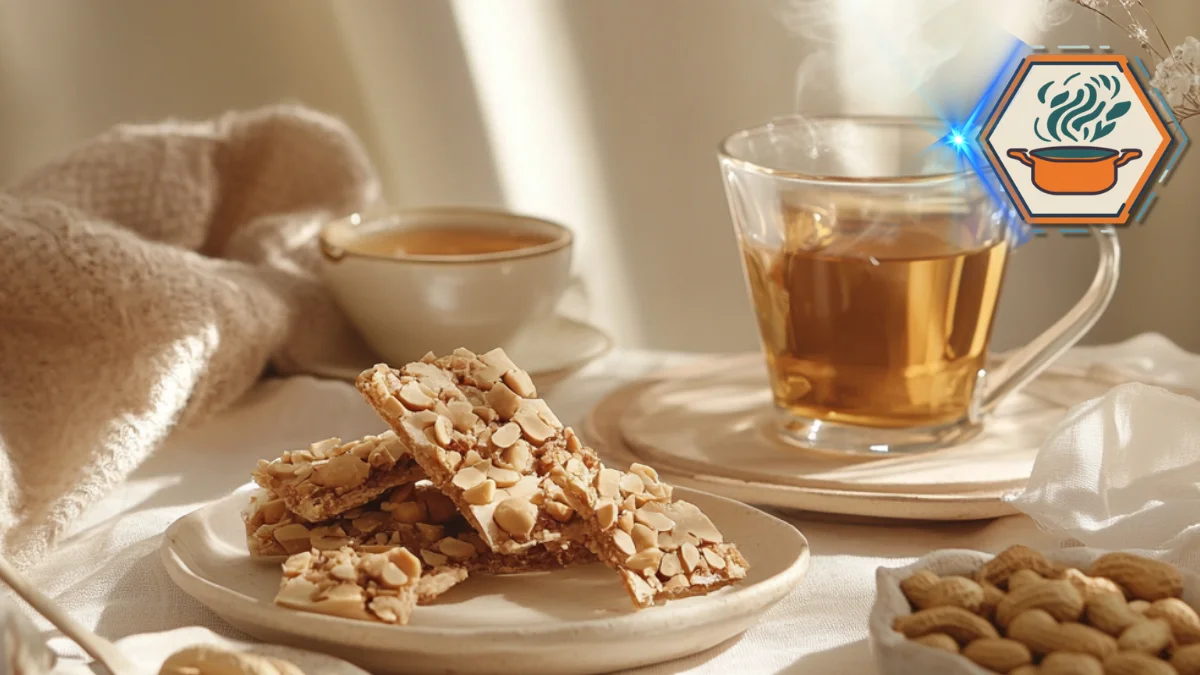Time to read:13 minutes
Understanding Peanut Brittle
What is Peanut Brittle?
Peanut brittle is a classic confectionery that has stood the test of time, delighting generations with its sweet and nutty crunch. This candy is a hard, flat sheet made from sugar, peanuts, and sometimes other complementary ingredients, offering a unique blend of sweetness and texture. Its golden-brown hue and brittle consistency make it a favorite treat for many.
Definition and Origins
The origins of peanut brittle trace back to various cultures, each with its interpretation of this sugary treat. While its exact history is debated, it is widely believed that Nut brittle evolved from ancient recipes combining nuts and honey. In the United States, peanut brittle became a popular snack in the late 19th century, thanks to the abundance of peanuts and advancements in sugar refining.
An interesting connection can be made to other nut-based confections worldwide, such as Middle Eastern baklava or Indian chikki. These variations highlight the universal love for combining nuts with a sweet medium. For more on the history of nut-based sweets, check out Wikipedia’s entry on confectionery.
Key Ingredients and Variations
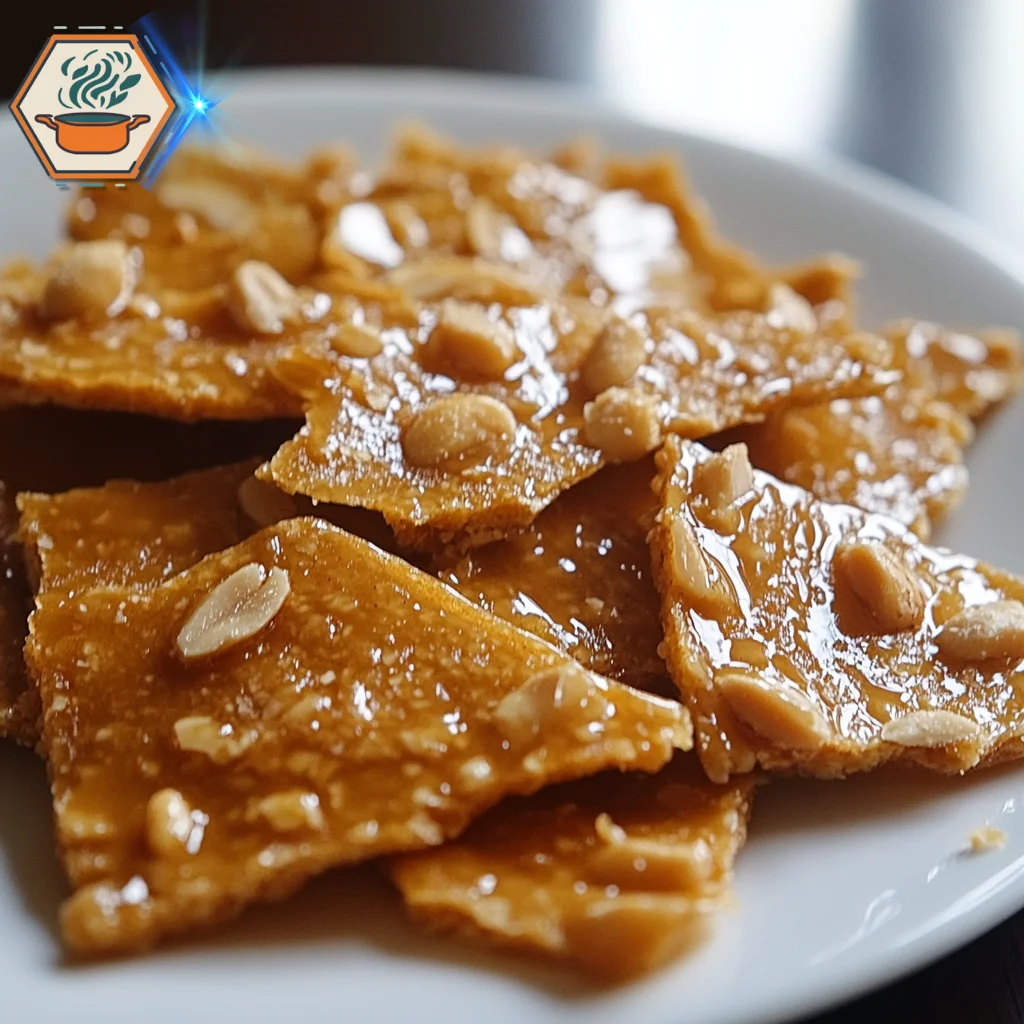
The simplicity of peanut brittle’s recipe is part of its charm. Traditional Nut brittle includes:
- Sugar: The primary sweetening agent, often caramelized for its distinct flavor.
- Peanuts: Typically roasted, adding a nutty richness.
- Butter: Enhances flavor and contributes to the smoothness of the mixture.
- Baking Soda: A key ingredient that creates tiny air bubbles, giving the brittle its characteristic texture.
Modern variations may include additions like:
- Chocolate drizzle for added decadence.
- Spices like cinnamon or cayenne for a twist.
- Alternative nuts such as almonds, pecans, or cashews for a unique flavor.
RecipesMind.com has an in-depth guide on how to make candy variations that you can explore for inspiration. For example, their post on Why do people add milk to their meatloaf offers insights into creative ingredient usage, which can also apply to confectionery recipes.
Nutritional Profile of Peanut Brittle
Peanut brittle is undeniably a delicious treat, but what does it bring to the table nutritionally? Understanding its caloric breakdown and nutrient content can help you decide whether it fits into your dietary goals.
Caloric Breakdown
A typical serving of peanut brittle (about 1 ounce or 28 grams) contains approximately:
- 120-150 calories
- 20-25 grams of carbohydrates (mainly from sugar)
- 6-8 grams of fat
- 2-4 grams of protein
This makes Nut brittle an energy-dense snack, primarily fueled by sugar and fat.
Sugar and Fat Content
The high sugar content in peanut brittle is what makes it so appealing—and also why it’s best enjoyed in moderation. Its fat content comes primarily from the peanuts and any added butter or oil, making it rich in both saturated and unsaturated fats.
While peanuts provide healthy fats, the added sugars can contribute to excess caloric intake if not balanced with physical activity.
Micronutrients Present (or Lacking)
Though peanut brittle isn’t known for being nutrient-dense, it does provide small amounts of:
- Magnesium and potassium from peanuts.
- Iron: Present in small amounts, contributed by the sugar and nuts.
- Negligible amounts of dietary fiber.
However, it lacks significant vitamins or other essential micronutrients, making it more of an occasional indulgence than a nutritional staple.
How Peanut Brittle is Made
The art of making Nut brittle combines traditional methods with modern innovations, offering something for both home cooks and large-scale manufacturers.
Traditional Methods
In its simplest form, making peanut brittle involves:
- Caramelizing sugar: Heat sugar and corn syrup until it reaches a golden-brown color.
- Incorporating peanuts: Add roasted peanuts to the hot mixture, ensuring even distribution.
- Baking soda: Added to achieve a light, airy, and brittle texture.
- Cooling and breaking: Spread the mixture thinly on a flat surface, let it cool, and break it into pieces.
Traditional recipes rely on attention to detail and manual techniques to achieve the perfect balance of crunch and flavor.
Modern Production Techniques
In the age of automation, Nut brittle production has scaled up significantly. Modern methods involve:
- Precision machinery that controls sugar temperature for consistent caramelization.
- Bulk roasting techniques to enhance peanut flavor.
- Packaging technology that ensures freshness while minimizing breakage.
The evolution of peanut brittle from a handmade treat to a mass-produced snack showcases how food technology has enhanced accessibility without compromising quality.
Health Impacts of Peanut Brittle
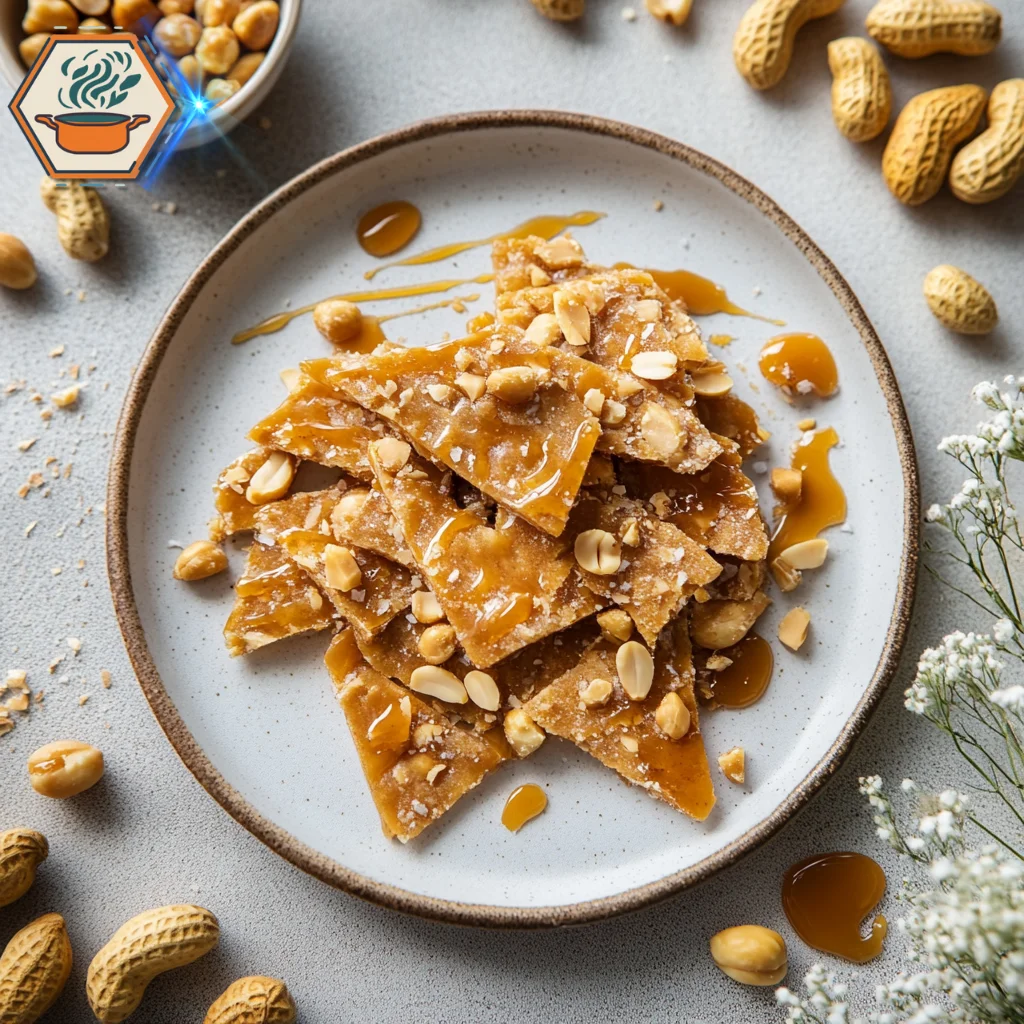
Peanut brittle is a beloved confection crafted from peanuts, sugar, corn syrup, and occasionally butter. It has a crunchy texture and a rich flavor that many people enjoy as a snack or dessert. However, like all sweets, it’s important to understand the health impacts of Nut brittle. While it may offer some benefits, it’s also crucial to recognize its potential risks. In this article, we’ll explore whether peanut brittle is good for you and whether it should be part of a balanced diet.
Is Peanut Brittle Good for You?
Peanut brittle, when consumed in moderation, can provide certain nutritional benefits, but it also has significant drawbacks. Let’s dive into the benefits and concerns surrounding Nut brittle to help you understand its place in a healthy diet.
Benefits of Consuming Peanut Brittle in Moderation
Protein and Energy from Peanuts
Peanuts are the main ingredient in Nut brittle, and they offer several health benefits. Peanuts are a great source of protein, which is essential for muscle repair, immune function, and overall health. A typical serving of peanuts provides around 8 grams of protein, making it an excellent snack option for those who need an energy boost.
Additionally, peanuts are rich in healthy fats, specifically monounsaturated fats, which are beneficial for heart health. These fats can help lower bad cholesterol levels and improve overall cardiovascular function. Peanuts also provide fiber, which supports digestive health and can contribute to feelings of fullness, helping to regulate appetite.
While the sugar content in peanut brittle increases its calorie count, the peanuts themselves offer significant health benefits. For instance, they are a good source of vitamin E, an antioxidant that helps protect the body from oxidative stress, and niacin, a vitamin that plays a crucial role in metabolism and nervous system health.
Overall, when consumed in small amounts, Nut brittle can offer a quick source of protein and energy from the peanuts, helping to fuel your body during a busy day.
Is Peanut Brittle Bad for You?
While peanut brittle can have benefits due to its peanut content, there are also some health concerns you should be aware of. Like many candies, peanut brittle is high in sugar and fat, which can lead to various health issues if consumed in excess.
High Sugar and Fat Concerns
One of the biggest downsides of peanut brittle is its high sugar content. A small serving of Nut brittle can contain over 20 grams of sugar, which contributes significantly to its calorie count. Excess sugar intake can lead to weight gain, increase the risk of developing type 2 diabetes, and negatively impact oral health by promoting cavities and tooth decay.
In addition to sugar, peanut brittle is also high in saturated fat, which can contribute to weight gain and heart disease if consumed in large amounts. Saturated fat raises bad cholesterol levels, leading to plaque buildup in the arteries and increasing the risk of cardiovascular diseases. It’s important to balance treats like Nut brittle with healthier snack options that are lower in sugar and fat.
Potential Health Risks (e.g., dental, metabolic)
Due to its sugar content, consuming peanut brittle frequently can have negative effects on your dental health. Sugar is a major cause of tooth decay, as it feeds harmful bacteria in the mouth, leading to cavities and gum disease. Moreover, the sticky texture of peanut brittle can cling to your teeth, prolonging the exposure to sugar and further increasing the risk of dental issues.
Another concern with peanut brittle is its impact on metabolic health. Regular consumption of high-sugar and high-fat foods can contribute to insulin resistance, a precursor to type 2 diabetes. Over time, excessive intake of sweets like peanut brittle can contribute to weight gain, which increases the likelihood of developing metabolic disorders and obesity.
For those with a family history of heart disease, excessive consumption of foods high in saturated fats, like peanut brittle, should be limited. Moderation is key to enjoying this sweet treat without experiencing negative health effects.
Comparing Peanut Brittle to Other Sweets
If you’re concerned about the health impacts of peanut brittle, you may wonder how it stacks up against other popular sweets. Let’s take a look at how peanut brittle compares to chocolate and other snacks in terms of health.
How Does it Stack Up Against Chocolate?
When comparing peanut brittle to chocolate, there are a few key differences. Chocolate, especially dark chocolate, contains antioxidants, such as flavonoids, which have been linked to various health benefits, including improved heart health and cognitive function. These antioxidants help fight oxidative stress in the body, which is something Nut brittle lacks.
However, milk chocolate, like peanut brittle, is also high in sugar and fat, making both of these treats less ideal for those trying to maintain a healthy diet. Dark chocolate has fewer added sugars and can offer some health benefits due to its antioxidants, while peanut brittle lacks these benefits but provides protein from the peanuts.
Ultimately, both chocolate and Nut brittle should be consumed in moderation, as they both come with health risks when eaten in excess. If you’re looking for a healthier sweet treat, opting for dark chocolate with at least 70% cocoa is a better option compared to peanut brittle, thanks to its lower sugar content and antioxidant properties.
Peanut Brittle vs. Healthier Snacks
When compared to other healthier snack options, peanut brittle falls short in terms of nutritional value. Healthy snacks like fresh fruit, vegetables, nuts, and yogurt offer a better balance of essential vitamins, minerals, fiber, and protein without the added sugar and fat.
For example, a handful of almonds provides healthy fats, fiber, and protein, while a piece of fruit delivers natural sugars along with fiber, antioxidants, and important vitamins. These snacks are much more beneficial for your overall health compared to peanut brittle, which is high in empty calories due to its sugar content.
Making Smart Choices with Peanut Brittle: How to Enjoy Peanut Brittle Responsibly
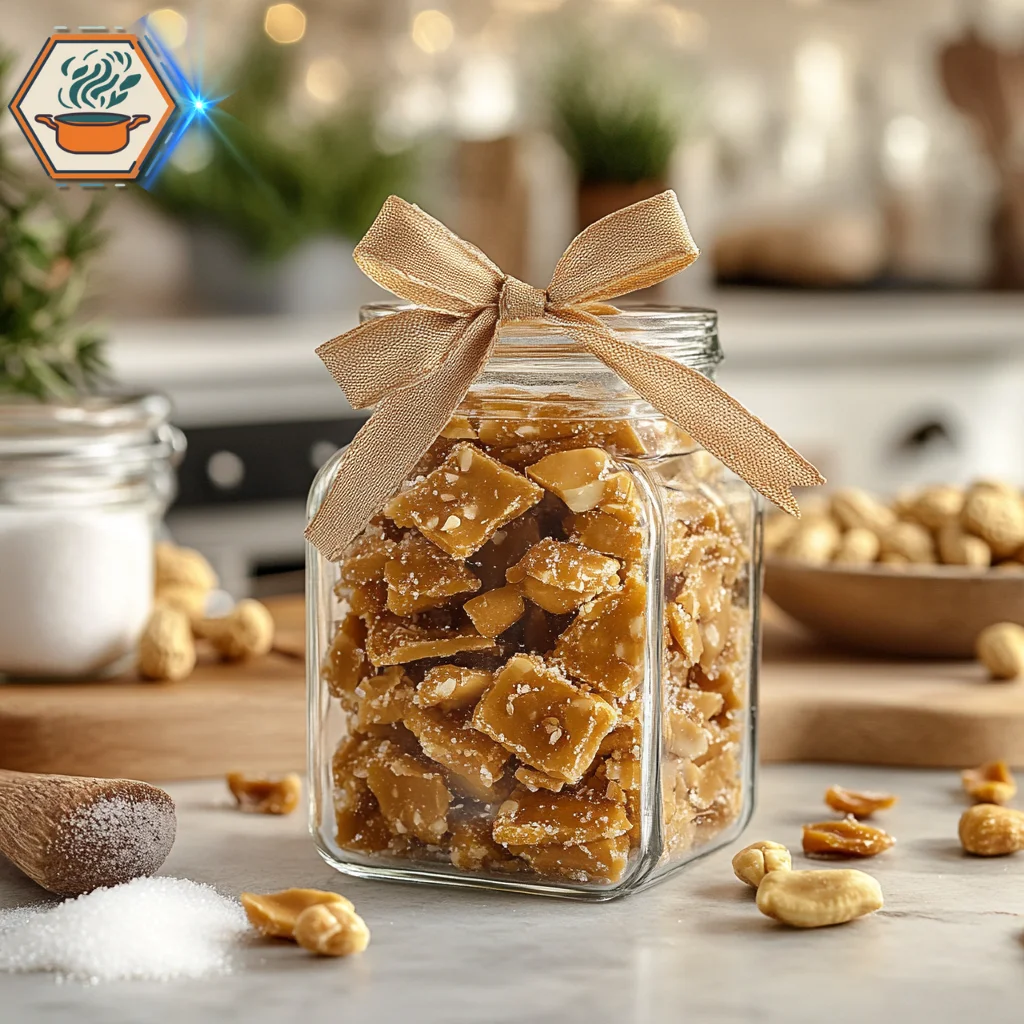
Peanut brittle, a classic sweet treat, is a favorite for its satisfying crunch and rich, nutty flavor. However, enjoying this confection responsibly can be a challenge due to its high sugar content. This guide explores how to make smarter choices when indulging in peanut brittle while maintaining a balanced lifestyle.
Portion Control Tips
When enjoying peanut brittle, portion control is key to balancing your indulgence with your health goals. A small serving, such as a 1-inch square, can satisfy your sweet tooth without overloading on sugar or calories. Here are a few tips for mindful portion control:
- Pre-portion your peanut brittle into small bags or containers to avoid overindulging.
- Pair your treat with a glass of water or herbal tea to slow down consumption and savor each bite.
- Save it for special occasions rather than making it an everyday snack.
By being mindful of portion sizes, you can enjoy your peanut brittle without guilt or compromising your health.
Pairing with Balanced Meals
To further balance the sugar rush of peanut brittle, consider pairing it with nutrient-dense meals. Combining it with high-fiber or protein-rich foods can slow sugar absorption and prevent energy crashes.
- Pair with nuts or seeds: These provide healthy fats and proteins, which help moderate blood sugar spikes.
- Enjoy after a balanced meal: Incorporating whole grains, lean proteins, and vegetables ensures you have a solid nutritional base.
- Avoid consuming it on an empty stomach: This can lead to a rapid spike in blood sugar levels.
Alternatives and Substitutes for Peanut Brittle
For those looking to reduce sugar intake or avoid allergens, there are plenty of alternatives to traditional peanut brittle. These options allow you to indulge without compromising on taste or dietary restrictions.
Low-Sugar or Sugar-Free Peanut Brittle Options
Many brands now offer low-sugar or sugar-free versions of peanut brittle, using alternative sweeteners like stevia or monk fruit. These options are ideal for those managing conditions such as diabetes or simply looking to cut back on sugar.
- Look for products with natural sweeteners for a cleaner ingredient list.
- Explore homemade recipes that allow you to control sugar levels (more on this below).
Exploring Nut-Free Variants for Allergies
Peanut allergies don’t have to mean missing out on the joy of brittle. Nut-free variants are available, often made with seeds like sunflower or pumpkin, providing a similar crunch and flavor.
- Sunflower seed brittle is a popular alternative for those with nut allergies.
- For a creative twist, try sesame seed brittle, which offers a unique, earthy flavor.
Homemade Peanut Brittle Recipes
Making peanut brittle at home allows for complete control over ingredients, making it easier to create a healthier version or accommodate dietary needs. Here are a few simple and delicious ideas:
Easy-to-Follow Recipes for Healthier Versions
Healthier peanut brittle recipes often incorporate natural sweeteners, reduced sugar, or additional nutrient-rich ingredients. Here’s a quick example:
Ingredients:
- 1 cup of roasted peanuts or your preferred seeds
- 1/2 cup of honey or maple syrup
- 1 teaspoon of vanilla extract
Steps:
- Heat the honey and vanilla in a saucepan until it reaches a soft-ball stage (around 235°F or 112°C).
- Stir in the peanuts or seeds, then pour the mixture onto a lined baking sheet.
- Let it cool and harden before breaking into pieces.
Creative Additions: Dark Chocolate, Seeds, or Spices
- Drizzle dark chocolate over the brittle for a decadent touch and an antioxidant boost.
- Mix in chia seeds or flaxseeds to enhance the brittle with extra fiber and omega-3 fatty acids.
- Add a dash of spices like cinnamon for warmth or cayenne for a spicy kick to create a distinctive flavor profile.
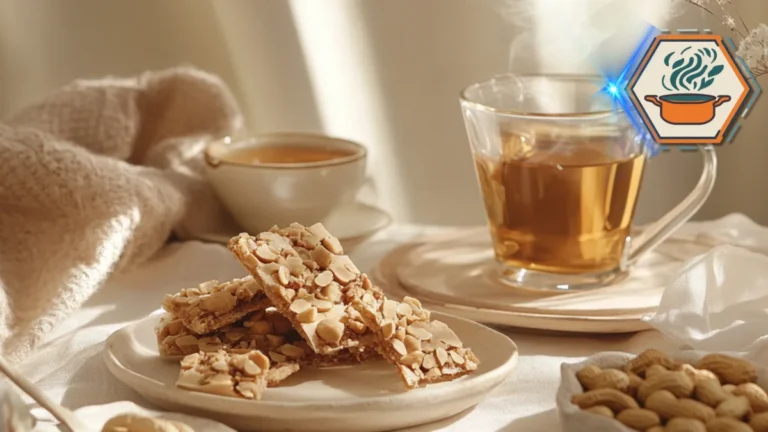
Homemade Peanut Brittle Recipe: Sweet and Crunchy Perfection
A classic homemade peanut brittle recipe that combines sweet, nutty flavors with a delightful crunch. Perfect for snacking or gifting!
- Total Time: 30 minutes
- Yield: Approximately 20 servings
Ingredients
- 2 cups granulated sugar
- 1 cup light corn syrup
- 1/2 cup water
- 1/4 tsp salt
- 2 cups roasted peanuts
- 2 tbsp unsalted butter
- 1 tsp vanilla extract
- 1 tsp baking soda
Instructions
- Prepare the Equipment: Line a baking sheet with parchment paper or grease it lightly.
- Cook the Sugar Mixture: In a heavy saucepan, combine sugar, corn syrup, water, and salt. Cook over medium heat, stirring until sugar dissolves.
- Bring to a Boil: Let the mixture boil without stirring until it reaches 300°F (hard-crack stage) on a candy thermometer.
- Add Peanuts: Stir in the roasted peanuts and cook for an additional minute.
- Incorporate Butter and Vanilla: Remove from heat and quickly stir in butter and vanilla.
- Add Baking Soda: Stir in baking soda; the mixture will foam.
- Spread the Mixture: Immediately pour the mixture onto the prepared baking sheet and spread it thinly.
- Cool and Break: Allow the brittle to cool completely, then break into pieces.
Notes
- Store in an airtight container at room temperature for up to 2 weeks.
- For a twist, drizzle melted dark chocolate over the brittle after it cools.
- Replace peanuts with almonds or cashews for variety.
- Prep Time: 15 minutes
- Cook Time: 15 minutes
- Category: Snacks, Desserts
- Method: Stovetop, Candy Making
- Cuisine: American
- Diet: Vegetarian
FAQs
Can Peanut Brittle Be a Healthy Snack?
Peanut brittle can be a part of a balanced diet if consumed in moderation and paired with nutritious foods. Opt for low-sugar versions or homemade alternatives to make it a healthier treat.
How Long Does Peanut Brittle Stay Fresh?
Stored in an airtight container at room temperature, peanut brittle can stay fresh for up to two weeks. For extended storage, place it in the refrigerator to maintain freshness.
What Are the Best Brands for Peanut Brittle?
Some of the most popular brands offering high-quality peanut brittle include:
See’s Candies: Known for its premium ingredients and traditional flavors.
Brittle Brothers: Offers a variety of flavors, including low-sugar options.
For a deeper dive into related topics, visit trusted sources like Wikipedia’s article on peanut brittle.

